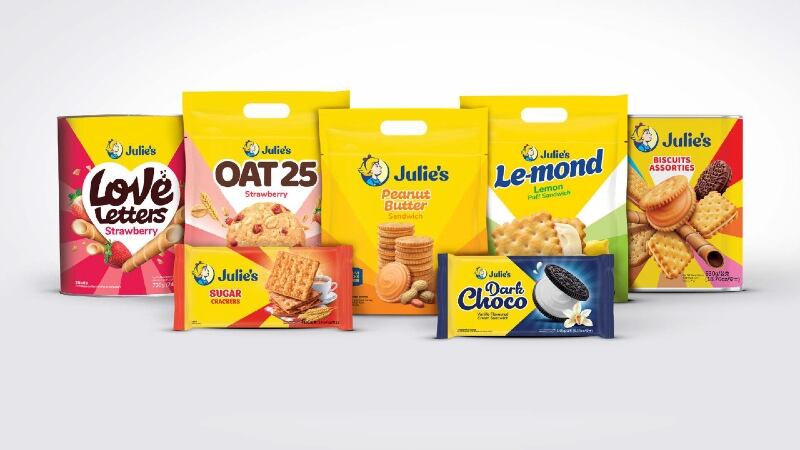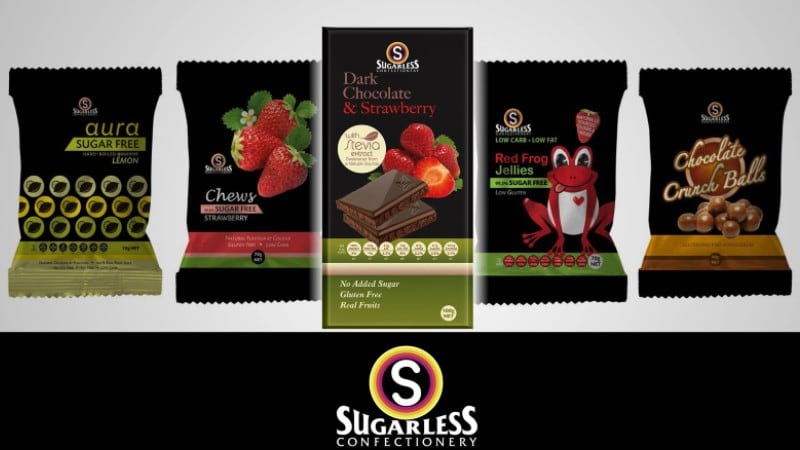Julie’s is one of the most well-known household brands in Asia, best-known for its peanut butter sandwiches in many markets, and the firm recently underwent a complete brand makeover which saw it switch to a younger version of the girl adorning the original Julie’s logo.
“This makeover was three years in the making since 2017, we just wanted to refresh the spirit of Julie’s after having had the same face for about 30 years, and lift internal and external spirits – but we definitely did not expect it to coincide with COVID-19,” Julie’s Director Sai Tzy Horng told FoodNavigator-Asia.
“In the past, Julie’s did not have any unified brand design system for out products, so we wanted to now ensure that there is a clear brand touchpoint out there for consumers to identify and recognise.
“The other thing of course is that Julie’s is very well-known as a nostalgic brand – most younger consumers will have memories of eating our products – but we’ve realised that for them, this tends to remain in their childhood and they may not bring this over into consumption and making purchases.
“One of the observations we’ve made in our home ground Malaysia is that it is often the older generation of consumers that will go out and buy our biscuits – the younger consumers may eat the biscuits, but rarely make the decision to buy these. So by making this change, we of course also hope to bring Julie’s back into their contemporary lives.”
Julie’s exports to around 80 countries, with its strongholds being in Malaysia, Singapore, Thailand, China, Taiwan and increasingly Vietnam, Indonesia and the Philippines – and the firm is also looking to appeal to consumers by increasing product relevance in each of these markets, based on consumer demands and trends.

“The peanut butter sandwich is the most well-known of course, as is its sister product the Pink Cheese sandwich which was made to fit the Asian cheese profile by being easier on the palate and less sharp than other cheese biscuits, so those are our mainstays,” said Sai.
“In some places like Malaysia, our love letters are very popular seasonally during festivals like Chinese New Year and Hari Raya, and we want to extend that seasonality. We’ve also noticed people moving away from purchasing large tins of biscuits and wanting smaller units, so we’re always adjusting pack sizes to meet different occasions here.
“As for Singapore, one very unique finding here that doesn’t exist elsewhere is that our wheat crackers do the best – of course, it could be partially because National Servicemen eat these as a staple, but it also shows that Singapore is more health conscious than the average market.
“China really likes the lemon biscuit range but in general, consumers here constantly want new flavours to try. It’s more culturally diverse so this trend is more aggressive, but it is still important to maintain the classical go-to flavours here as there is also high demand.”
All in all though, he believes that the outlook for biscuits in the region is still very positive, especially in South East Asia.
“We are not just facing steep competition from other biscuit firms, but also many snack firms as a whole these days – but South East Asia is still very much a biscuit-eating region so I feel the outlook is still positive,” he said.
“So what’s important for us is to make sure to innovate and come up with new flavours and other exciting things, as this is very important to increase consumer interest; and also to make our biscuits relatable and to resonate with younger consumers’ lives.”
Expansion and growth
Given the large number of markets Julie’s is already in, a key growth strategy for the firm will be to go deeper into existing markets moving forward.
“Deepening into markets will mean building our brand voice and awareness in developing markets, and of course building deeper relationships with currently robust markets,” said Sai.
“For example, when we launched our rebrand in Singapore we immediately saw a lot of brand love and we must find ways to capitalise and grow based on this, but in Thailand we’ve only ever had a limited suite of products there since beginning exports, and Thai consumers only know us as the peanut butter biscuits brand, so we need to expand their understanding and bring in more products.
“We also want to develop our market in Myanmar and Cambodia, to develop a stronger presence there – the main challenge is that buying power is not so strong in these countries, so we will need solutions like adjusting for pack size or creating different products to suit local requirements at different price points.”
New product development plans
In terms of new product development, Sai highlighted three strategies that Julie’s is planning for the near future.
“The first is expanding flavour variants for old time favourites like the wafer cubes to make these more interesting – we’re thinking of doing limited edition stuff to try out the markets, and this would be safer to experiment too, if not so acceptable we can always make changes and try again,” he said.
“The other thing is to make products that are more relevant to micro moments in life now – Julie’s biscuits used to be bought a lot as pantry snacks by office managers, for example, but with so many people working from home now for what looks like it will be a long time, we have to consider solutions for this instead like maybe a family pack of assorted biscuits.
“Lastly is that we’re trying to find a sustainable way to create a health-focused range – I say sustainable as the segment is pretty tricky, and we don’t want to be pretentious about it but instead make sure what we create makes sense for the consumers and is something they will enjoy eating.”





